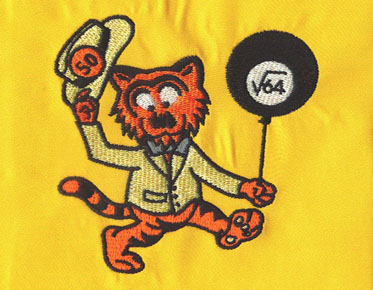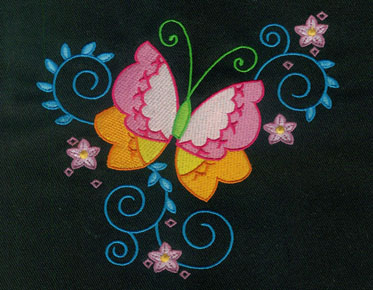Stitching Adventures: Child-Friendly Embroidery Activities for Creative Minds
Embarking on the enchanting journey of embroidery is not just for adults; children, too, can explore the magical world of needle and thread through engaging and age-appropriate activities. From simple stitches to vibrant colors, embroidery offers a wonderful way for kids to express their creativity and develop fine motor skills. In this blog, we'll dive into a treasure trove of child-friendly embroidery activities, providing a guide for parents, educators, and little ones to discover the joy of stitching together.
Setting the Stage for Embroidery
Fun: Creating a Kid-Friendly Crafting Space
Safety First:
● Before diving into embroidery activities, ensure that you've gathered
child-friendly, blunt-tipped needles and supervised embroidery hoops.
● Choose age-appropriate materials and provide clear guidelines on safe
needle handling.
Colorful Threads and Fabrics:
● Introduce a spectrum of vibrant embroidery floss in assorted colors to
spark the children's imagination.
● Opt for fabrics with a loose weave like cotton or muslin, making it
easier for small hands to navigate the needle.
Design Inspirations:
● Offer a variety of design templates suitable for children, ranging from
simple shapes and animals to their favorite cartoon characters.
● Encourage them to create their designs or adapt existing patterns to
suit their preferences.
Comfortable Seating:
● Ensure that the crafting space is comfortable with child-sized chairs
and tables.
● Good lighting is essential to prevent eye strain and enhance their stitching experience.
Child-Friendly Embroidery
Activities: Unleashing Creativity One Stitch at a Time
Basic Stitch Sampler:
● Start with the fundamentals by teaching children basic embroidery stitches such as the running stitch,
backstitch, and satin stitch.
● Create a sampler project where they can practice each stitch on a
designated section of fabric, turning it into a colorful and informative
keepsake.
Personalized Initials or Name Hoops:
● Have children stitch their initials or full names onto fabric hoops.
● This activity not only enhances their embroidery skills but also
results in a personalized piece of art they can proudly display.
Embroidered Storybook:
● Combine storytelling with embroidery by creating an interactive
embroidered storybook.
● Children can embellish fabric pages with characters and scenes from
their favorite stories, fostering a love for both reading and crafting.
Fabric Collage Art:
● Provide a variety of fabric scraps, buttons, and beads for children to
create vibrant fabric collages.
● Encourage them to experiment with layering and stitching to bring their
imaginative scenes to life.
Nature-Inspired Embroidery:
● Take the crafting session outdoors and let children draw inspiration
from nature.
● They can stitch flowers, butterflies, or even their favorite animals
onto fabric, creating a connection between their artistic expression and the
world around them.
DIY Embroidered Patches:
● Guide children in creating their own embroidered patches.
● They can design patches featuring symbols, shapes, or even
representations of their hobbies, adding a personalized touch to their
backpacks or clothing.
Collaborative Family Tree:
● Foster a sense of family unity by creating a collaborative family tree.
● Each family member, including the children, can embroider their initials or small symbols onto individual leaves or branches, creating a beautiful representation of family connections.
Tips for Facilitating a Positive
Embroidery Experience for Kids
Patience and Encouragement:
● Embroidery, like any craft,
takes time to master. Be patient and offer plenty of encouragement.
● Celebrate small achievements to boost children's confidence and keep
them motivated.
Create a Relaxing Atmosphere:
● Play soft music or provide a calm environment to enhance the stitching
experience.
● Avoid time constraints, allowing children to enjoy the process at their
own pace.
Variety in Materials:
● Introduce different textures of fabrics and embellishments to add
variety and excitement to their projects.
● Experimenting with diverse materials enhances their sensory experience.
Embrace Imperfections:
● Encourage a positive attitude toward imperfections. Remind children
that each stitch is unique, and small mistakes add character to their
creations.
● Emphasize the value of creativity over perfection.
Benefits of Child-Friendly
Embroidery Activities
Fine Motor Skill Development:
● Embroidery requires precise hand movements, promoting the development
of fine motor skills in children.
● The coordination between hand and eye movements enhances their
dexterity.
Creativity and Self-Expression:
● Embroidery offers a canvas for self-expression, allowing children to
unleash their creativity through color choices, design elements, and personal
touches.
● It nurtures their artistic instincts and boosts confidence in
expressing themselves.
Focus and Concentration:
● Stitching demands concentration, providing a meditative and calming
experience for children.
● The focus required during embroidery contributes to improved attention
spans.
Sense of Accomplishment:
● Completing an embroidery project
instills a sense of accomplishment in children.
● Displaying their finished pieces fosters a sense of pride and boosts
their self-esteem.
Bonding and Collaboration:
● Embroidery activities offer an opportunity for collaborative crafting
sessions, promoting family bonding.
● Parents, siblings, and friends can join in, creating a shared experience of creativity and fun.
Conclusion: Weaving Memories with
Needle and Thread
Embroidery
activities for kids go beyond the simple act of stitching; they are a gateway
to a world of creativity, self-expression, and skill development. By providing
a nurturing and child-friendly embroidery environment, parents and educators
can inspire a love for crafting that lasts a lifetime. As children explore the
vibrant tapestry of colors and textures, they are not just creating art—they
are weaving memories, one stitch at a time. So, let the needles dance, the
threads sing, and the imaginations soar as children embark on their stitching
adventures, discovering the joy of embroidery in all its whimsical glory.


